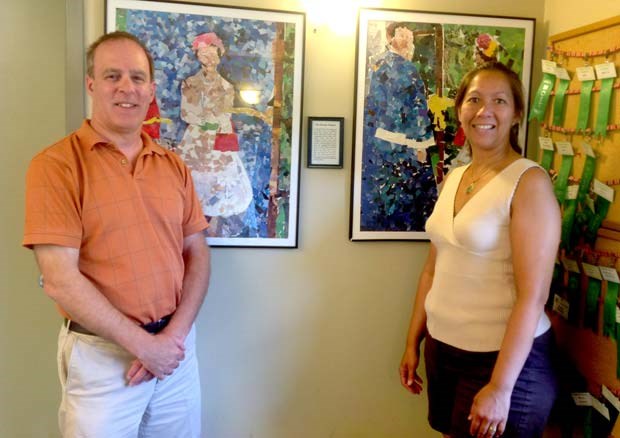On any given day, people from around the world can be found playing sports, picnicking, or mingling with friends at the playground as their children play in Moody Park.
The 2006 census found that immigrants settling in New Westminster after 2001 are much more likely to settle in the adjacent Brow of the Hill neighbourhood than other parts of the city. It showed that immigrants to the area come from countries including the Philippines, India, United Kingdom, China, South Korea, Romania, Hong Kong, the Untied States, Fiji and Poland.
Dean Gibson, the city's director of parks, culture and recreation, is well acquainted with the park's diversity, as his office is located in the building next to the playground.
"It is very, very diverse," he said. "I am often here in my office in the evening, and during the summertime have the benefit of overhearing the voices outside. I will be hearing Eastern European languages, Asian languages, occasionally some English."
Gibson is pleased that Moody Park provides a place where people from a variety of cultures are able to connect through play and recreation.
"They are all out there doing their thing," he said. "From time to time those folks from different cultures have an opportunity to interact and get to know each other. That builds that really neat sense of community that we have in the city."
Lord Kelvin Elementary School, located across the street from Moody Park, is equally reflective of the neighbourhood's diversity.
In 2010, Lord Kelvin's then principal Barb Keating and vice principal Ruby Sihota presented the school district with a report that stated 27 per cent of the students at that time had an ESL designation and 46 per cent of the school population spoke a second language at home.
Although many of the residents in single family homes in the Moody Park neighbourhood have lived in the area for years, many apartment dwellers move in and out of the apartments in the Uptown and Brow of the Hill neighbourhoods that feed into Lord Kelvin Elementary School. For newcomers to Canada and the New Westminster, these are often the first place they live when trying to make a life in their new homeland.
Kevin McKay, who has worked as a recreation leader at Century House since 1985, has seen an increasing diversity in visitors to the seniors' facility in the past two decades.
"We had one African-American woman," he said of his early years at the centre. "I don't think there was another visible minority in the place."
In addition to a greater cultural diversity at Century House, the centre has also seen a shift in terms of its demographics as people live longer: in 1985, just over eight per cent of Century House members were 85 years or older, but by 2012 that had grown to 21 per cent. Back in 1985, less than five per cent of the members were under 60 years, but that had grown to nine per cent by 2012, while the number of members between 65 and 79 years of age was 66.6 per cent in 1985 but had dropped to 46 per cent in 2012.
McKay, who was first introduced to Moody Park in 1979 when worked as a teen leader in New Westminster, said Century House has attracted a more culturally diverse clientele through the years but has also started offering a more diverse range of activities.
"When I started there was huge number of people doing a limited number of things - bingo, dances, carpet bowling, singing," he said. "Now there is a wider diversity of things programmed."
Today's more diversified offerings at Century House include tai chi, ukulele, pickleball, mahjong, darts, bridge, table tennis and creative writing and pottery. While some programs attract smaller numbers, others, like the fitness classes, cater to large crowds.



